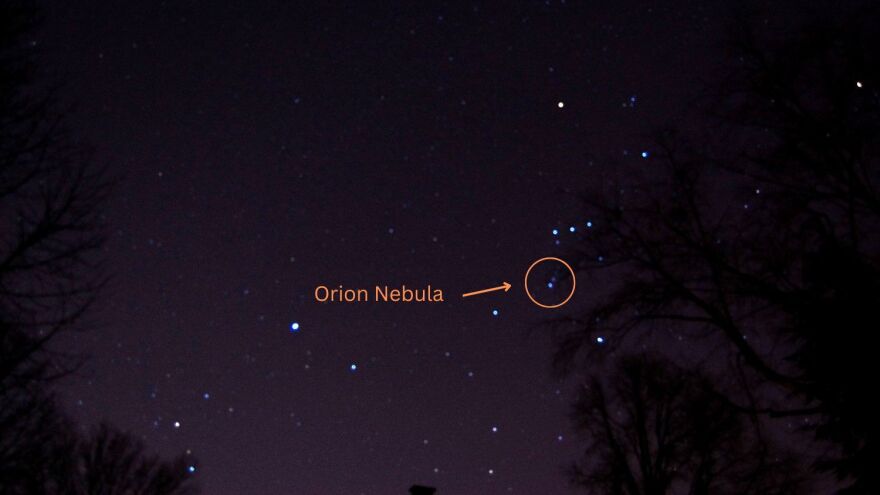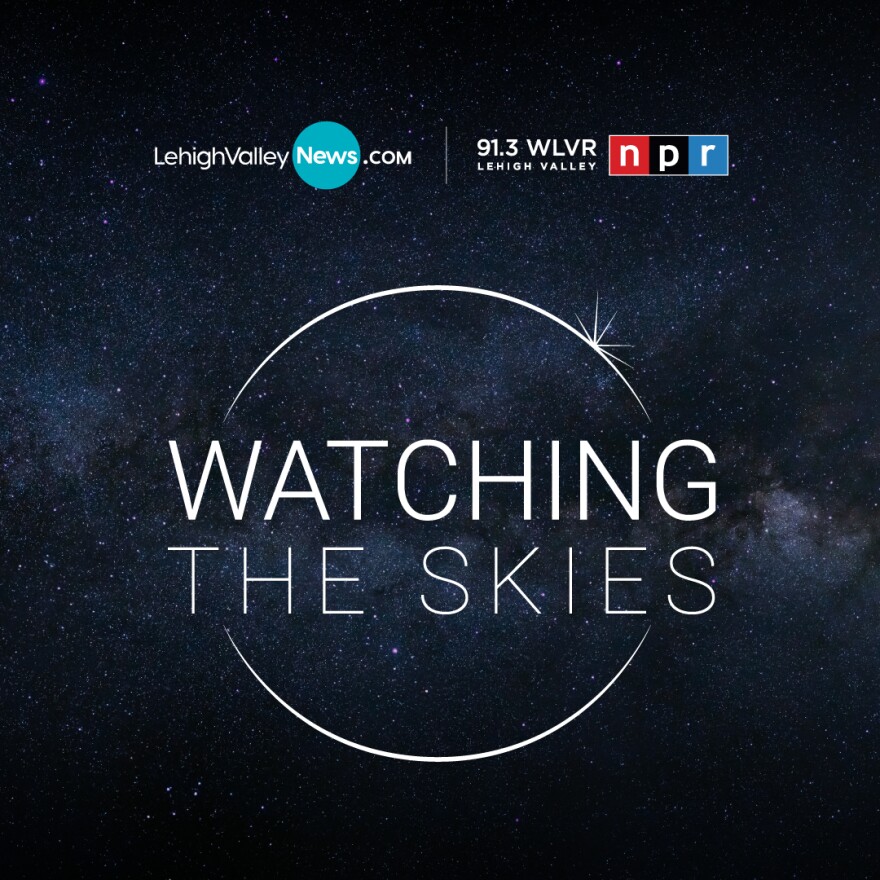BETHLEHEM, Pa. — This month… Watching the Skies has been all about Orion. One of the most visible and easily identifiable constellations in the winter sky, Orion is on the rise in the Southeastern sky after sunset for the entire month of February, moving west as the evening goes on.
Among the stars that make up the Orion constellation is the Orion Nebula, which is the focus of Watching the Skies this week.

A nebula is an accumulation of gas and dust that collapses due to gravity and starts to form a variety of stars over time, according to amateur astronomer, Marty McGuire who goes by ‘Backyard Astronomy Guy’ on social media.
What makes the Orion Nebula different from the other points of light in the constellation Orion, is that it is not a star at all, but rather a star-forming region. A “stellar nursery,” said McGuire.
In order to find this star-forming region, first look for Orion’s belt. The points of light that descend from the belt are usually considered to be Orion the Hunter’s sword. The Orion Nebula at the bottom of the sword. With a pair of binoculars, on a clear night you may be able to see a hazy blue-green smudge in the night sky, instead of the single point of light emitted by a star.

McGuire said not to expect the brilliant colors and detail that NASA publishes in images of Orion from space telescopes like the Hubble. But even from earth with binoculars, you should be able to get a glimpse of one spot in our own galaxy, where young stars are being born.


